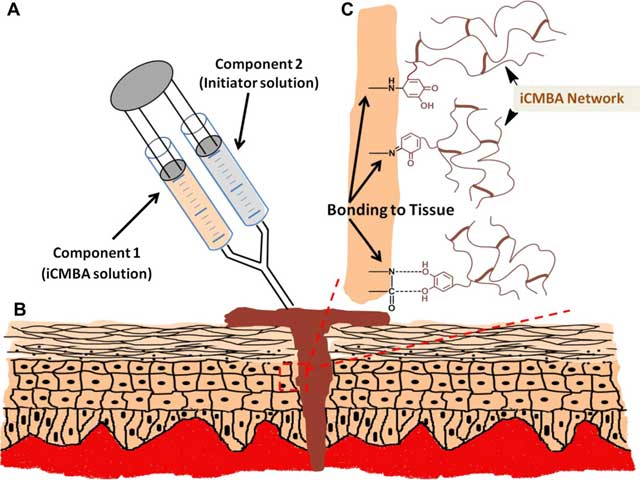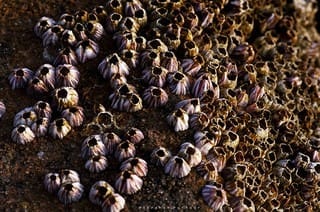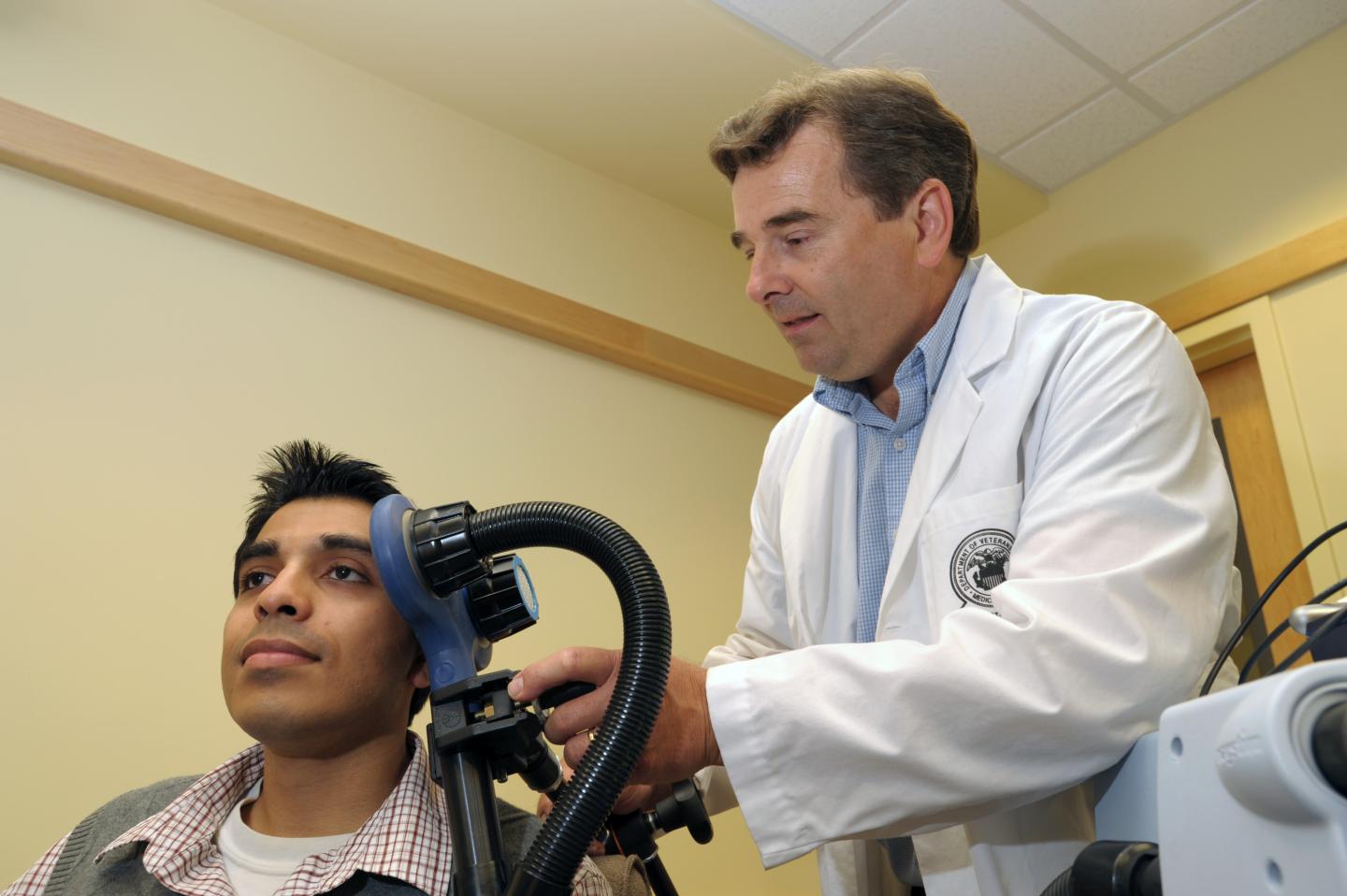
One of the most basic yet important surgical skills to keep a patient alive and intact may be closing wounds.
It seems that doctors will now get the job done with more ease thanks to new, nontoxic surgical glue that instantly seals a bleeding wound and helps it heal without a scar or inflammation.
Inspired by nature’s wonders, Korean scientists at Pohang University of Science and Technology (POSTECH) have developed a light-activated, mussel protein-based bioadhesive (LAMBA) that works on the same principles as mussels attaching to underwater surfaces and insects maintaining structural balance and flexibility. The product, called LAMBA, has emerged as a promising candidate for an ideal bioadhesive for its outstanding properties; LAMBA’s compatibility with the human body, strong adhesiveness in wet conditions, and convenient handling point to the possibility of myriad medical applications.
Mechanical fasteners like sutures and staples have accounted until recently for a major portion of conventional medical devices that are used to hold body tissues together. The invasive nature of traditional methods, however, has been the biggest drawback causing severe tissue damage, complicated post-treatment management, and scars. Their use is also limited when handling delicate tissues and internal organs, giving rise to a need for alternatives that do not require penetration. Tissue adhesives have been increasingly pursued these days as a more desirable bonding material, but the adhesives currently available in the market likewise have their own limitations. While chemically derived adhesives such as cyanoacrylates are likely to provoke an adverse reaction, biologically derived ones are not strong enough to close wounds like sutures do. A common and critical challenge, moreover, is that most surgical glues do not stick in a wet environment, which is essential for medical applications.
Dr. Hyung Joon Cha, a professor of the Department of Chemical Engineering at POSTECH, and his student, Eun Young Jeon, have developed a new approach that readily overcomes these drawbacks. The new product LAMBA, a focus of their recent publication in Biomaterials, is an upgrade version of previously known mussel-inspired adhesives that copy mussels’ ability to fix their body under water. Instead of producing recombinant mussel adhesive proteins (MAPs) by modifying DOPA, a key element for the adhesive property, E.Y. Jeon et al., have created the new tissue adhesive via a photochemical reaction using blue visible light.
“LAMBA opens numerous doors for medical practices ranging from blocking air leaks and sutureless wound closures of delicate organs or tissues beyond surgeons’ reach, to hemostatic agent and drug delivery medium, just to name a few,” commented Dr. Cha, a corresponding author of this study.
Read more: New mussel-inspired surgical protein glue: Close wounds, open medical possibilities
The Latest on: Bioadhesive hydrogel
[google_news title=”” keyword=”bioadhesive hydrogel” num_posts=”10″ blurb_length=”0″ show_thumb=”left”]
via Google News
The Latest on: Bioadhesive hydrogel
- Revolutionary Tagging Method Breaks Barriers for Marine Research in Falmouth, USAon April 17, 2024 at 8:12 am
This footage was filmed and produced 16 April 2024. [Note: no sound] In a landmark advancement for marine research, scientists have unveiled a groundbreaking tagging method poised to revolutionize the ...
- New tagging method provides bioadhesive interface for marine sensors on diverse, soft, and fragile specieson April 16, 2024 at 7:56 pm
Tagging marine animals with sensors to track their movements and ocean conditions can provide important environmental and behavioral information. Existing techniques to attach sensors currently ...
via Bing News










